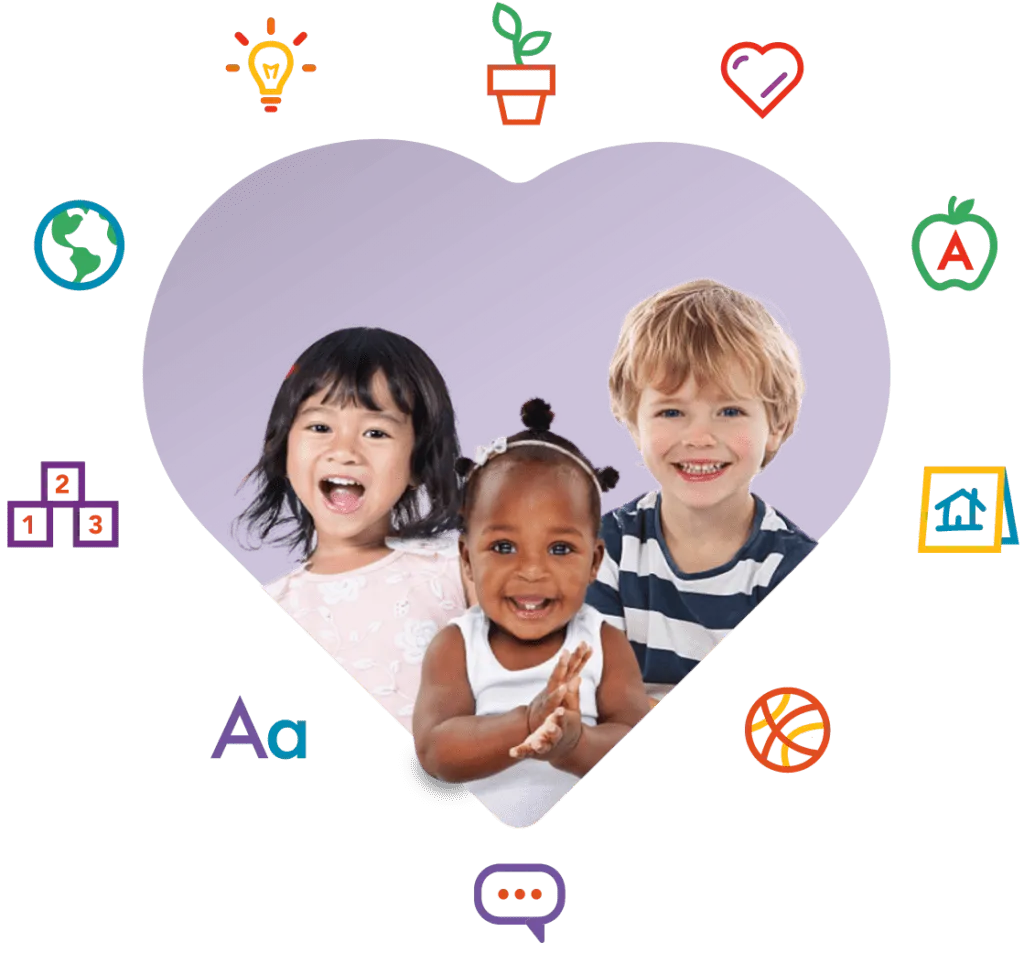Click each section below to view the objectives for development and learning.
- Regulates own emotions and behaviors
- Manages feelings
- Follows limits and expectations
- Takes care of own needs appropriately
- Establishes and sustains positive relationships
- Forms relationships with adults
- Responds to emotional cues
- Interacts with peers
- Makes friends
- Participates cooperatively and constructively in group situations
- Balances needs and rights of self and others
- Solves social problems
- Demonstrates traveling skills
- Demonstrates balancing skills
- Demonstrates gross-motor manipulative skills
- Demonstrates fine-motor strength and coordination
- Uses fingers and hands
- Uses writing and drawing tools
- Listens to and understands increasingly complex language
- Comprehends language
- Follows directions
- Uses language to express thoughts and needs
- Uses an expanding expressive vocabulary
- Speaks clearly
- Uses conventional grammar
- Tells about another time or place
- Uses appropriate conversational and other communication skills
- Engages in conversations
- Uses social rules of language
- Demonstrates positive approaches to learning
- Attends and engages
- Persists
- Solves problems
- Shows curiosity and motivation
- Shows flexibility and inventiveness in thinking
- Remembers and connects experiences
- Recognizes and recalls
- Makes connections
- Uses classification skills
- Uses symbols and images to represent something not present
- Thinks symbolically
- Engages in sociodramatic play
- Demonstrates phonological awareness, phonics skills, and word recognition
- Notices and discriminates rhyme
- Notices and discriminates alliteration
- Notices and discriminates discrete units of sound
- Applies phonics concepts and knowledge of word structure to decode text
- Demonstrates knowledge of the alphabet
- Identifies and names letters
- Identifies letter–sound correspondences
- Demonstrates knowledge of print and its uses
- Uses and appreciates books and other texts
- Uses print concepts
- Comprehends and responds to books and other texts
- Interacts during reading experiences, book conversations, and text reflections
- Uses emergent reading skills
- Retells stories and recounts details from informational texts
- Uses context clues to read and comprehend texts
- Reads fluently
- Demonstrates writing skills
- Writes name
- Writes to convey ideas and information
- Writes using conventions
- Uses number concepts and operations
- Counts
- Quantifies
- Connects numerals with their quantities
- Understands and uses place value and base ten
- Applies properties of mathematical operations and relationships
- Applies number combinations and mental number strategies in mathematical operations
- Explores and describes spatial relationships and shapes
- Understands spatial relationships
- Understands shapes
- Compares and measures
- Measures objects
- Measures time and money
- Represents and analyzes data
- Demonstrates knowledge of patterns
- Uses scientific inquiry skills
- Demonstrates knowledge of the characteristics of living things
- Demonstrates knowledge of the physical properties of objects and materials
- Demonstrates knowledge of Earth’s environment
- Uses tools and other technology to perform tasks
- Demonstrates knowledge about self
- Shows basic understanding of people and how they live
- Explores change related to familiar people or places
- Demonstrates simple geographic knowledge
- Explores the visual arts
- Explores musical concepts and expression
- Explores dance and movement concepts
- Explores drama through actions and language
- Demonstrates progress in listening to and understanding English
- Demonstrates progress in speaking English
